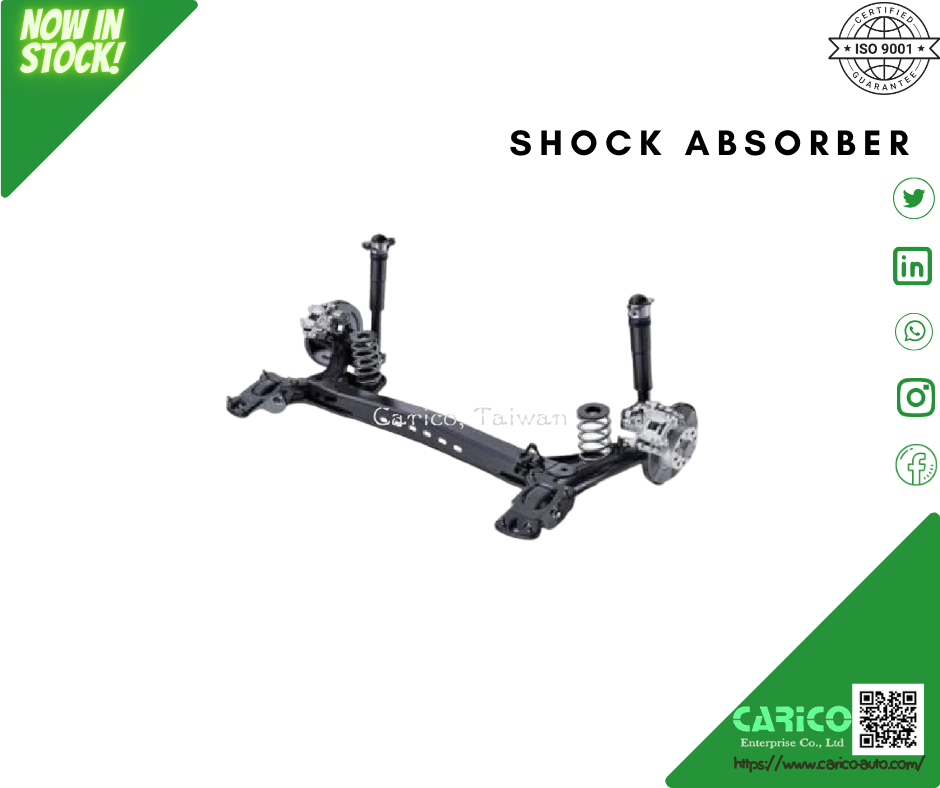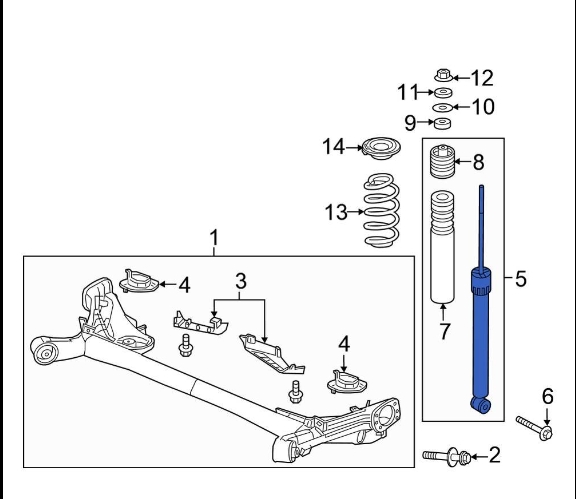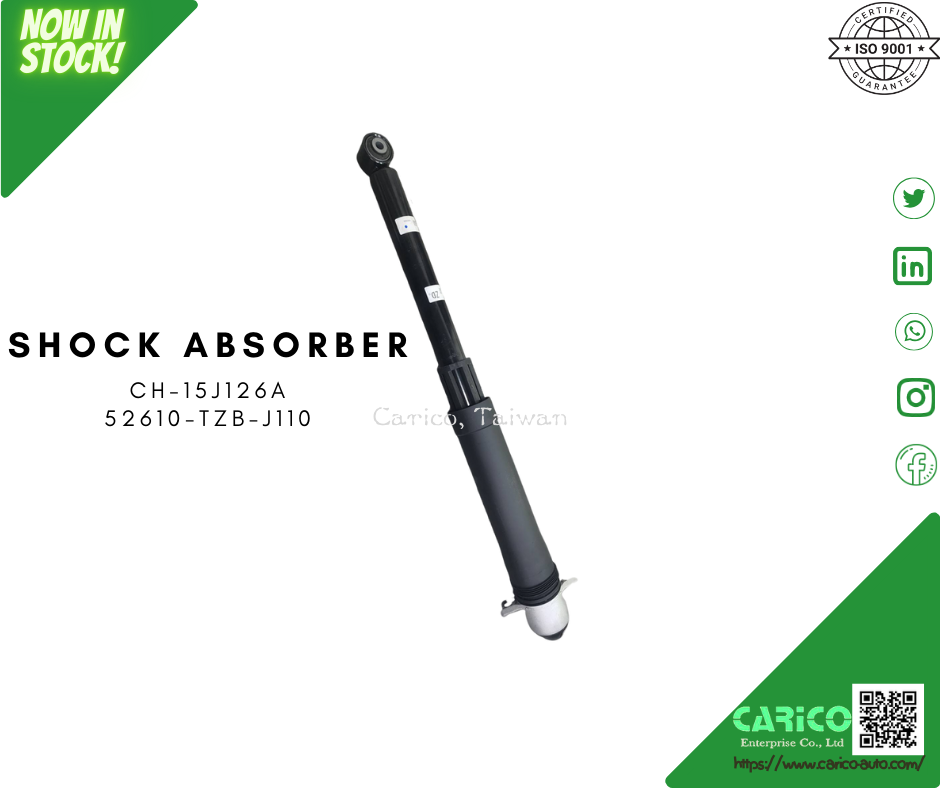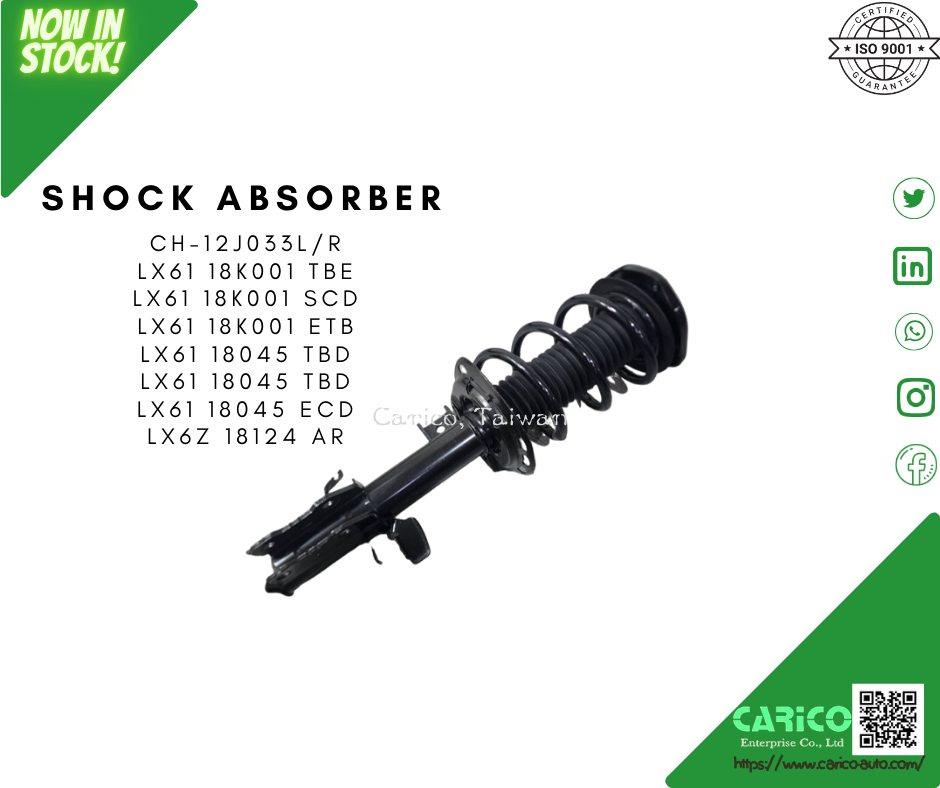Automotive Shock Absorber: Function, Importance, and Maintenance

What Is an Automotive Shock Absorber?
Shock Absorber belongs to a part of the car's suspension system. Shock absorbers can absorb the energy generated by the movement of the vehicle's wheels and body while in motion. When the car encounters a pothole or obstacle, the shock absorber compresses and releases that energy gradually to prevent excessive swaying or bouncing of the vehicle.
Apart from improving comfort and control, shock absorbers can also reduce stress and fatigue on mechanical parts, so they play a very important role in the durability of other components of the suspension system and the car. Keep in mind that shock absorbers can come in various shapes and types, including hydraulic, electronic, and gas shock absorbers, among others, each with its own features and advantages.
Regular maintenance is crucial for the shock absorber to function properly, as wear and defects can have a negative impact on the safety and performance of your car.
How Does an Automotive Shock Absorber Work?

The operation of an automotive shock absorber is based on the principle of dissipating the energy generated by the movement of the vehicle's suspension. Additionally, the shock absorber can convert kinetic energy into controlled thermal energy, which is achieved through a process of internal friction.
Piston and Cylinder: The heart of the shock absorber is a cylinder filled with oil or pressurized gas. Inside the cylinder, there is a piston that moves up and down in response to the suspension's movements.
Valve Mechanism: There are small holes and valves in the piston and at the top of the cylinder that allow the oil to flow from one side of the piston to the other. These valves are adjustable and designed to regulate the speed at which the oil can pass from one side to the other.
Suspension Movement: The piston will move within the cylinder in response to motion when your car hits a bump or experiences compression or extension of the suspension due to road irregularities.
Energy Dissipation: The oil is forced through the valve mechanism as the piston moves up and down. The design of these valve mechanisms allows the oil to flow in a controlled manner, creating resistance and dissipating kinetic energy. At the same time, this energy dissipation is converted into heat, which is released outside the shock absorber.
Suspension Control: The controlled resistance generated by the shock absorber can help maintain the stability of the car by controlling suspension movement, preventing excessive bouncing of the wheels and vehicle body, and ensuring that the wheels stay in contact with the road surface.
Note that shock absorbers can vary in design and technology, whether they are hydraulic, gas-filled, electronic, or other types, but the basic principle of energy dissipation is common to all of them.
Regular Maintenance of Automotive Shock Absorbers
So, how can you maintain your car's shock absorbers? You can regularly visually inspect them for oil leaks, damage to the covers, or any signs of wear. If you find anything abnormal, it is advisable to replace them promptly, as shock absorbers have a limited lifespan, and wear will worsen over time.
Most manufacturers recommend replacing shock absorbers every 50,000 to 100,000 kilometers, but this can vary depending on the vehicle model and road conditions. If you notice a significant decrease in comfort or stability in your car, the issue may be related to the automotive shock absorber.
5 Ways to Maintain Your Automotive Shock Absorbers
-
Regular and Preventive Suspension Maintenance: Regularly maintaining the suspension system in good condition is important, including checking and periodically replacing suspension components such as bushings, ball joints, stabilizer links, or springs, among others. A trained mechanic can diagnose the need for replacement and make adjustments.
-
Drive Carefully: It is advisable to avoid large potholes and slow down before encountering rough road surfaces while driving to minimize the impact on the shock absorbers.
-
Proper Loading: Never overload your vehicle beyond its designated capacity. Excess weight can cause additional pressure on the shock absorbers and shorten their lifespan.
-
Avoid Collisions and Impacts: Try to avoid hitting curbs, curbstones, and obstacles at high speeds, as these impacts can damage the shock absorbers.
-
Use High-Quality Shock Absorbers: Ultimately, choosing high-quality replacement parts is also crucial when you need to replace them. CARICO Shock Absorbers can ensure consistent and durable performance.
Choosing CARICO Shock Absorbers guarantees quality parts and vehicle comfort.


SUSPENSION SYSTEM
STEERING SYSTEM
BRAKE SYSTEM
ENGINE SYSTEM
ADJUSTABLE PARTS (SUB-BRAND FOTADO,ODM)

